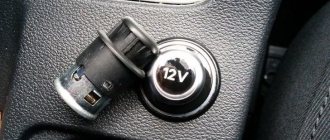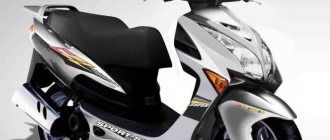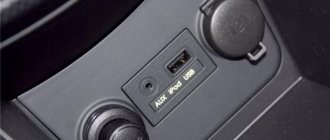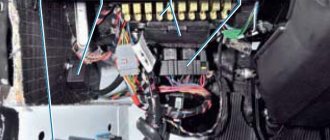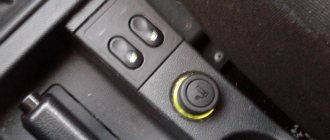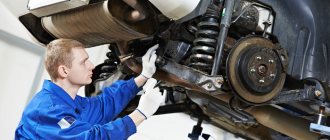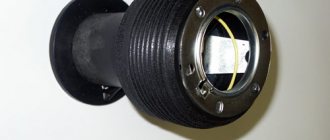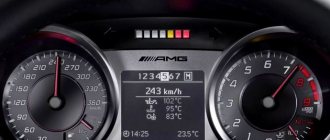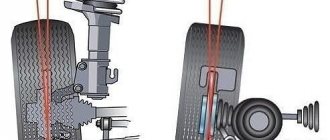This question, of course, is relevant only for beginners, both in driving and in the automotive business in general. An experienced driver, in response to the question “How to pump up a tire,” will grin and answer: “How, how.” Take it and pump it up. Since this question does not present any difficulty or mystery to an experienced driver.
So, the car has wheels. Wheels have tires. These tires need to be inflated from time to time. To do this, you need to know what the optimal tire pressure should be. Please note that the front tire pressure may be slightly different from the rear tire pressure. However, an indicator of the proper level of tire pressure is in the passport.
Get into the habit of at least visually inspecting the tires before each departure from the parking lot or garage to see if they are flat? And if it even seems to you that one wheel is “squeezed in” more than the others, don’t be lazy to check its air pressure level. This means you should have a pressure gauge in your glove compartment. And if the pressure is less than prescribed, the wheel should be pumped up. Experienced drivers – and you’ve probably noticed this – kick their tires before leaving.
And by the impact they can determine whether the tire should be pumped up or not. As for you, if you have picked up the pressure gauge, check, just in case, the pressure in all the wheels. Reduced tire pressure when driving will create uneven adhesion to the road surface and contribute to tread wear. Uneven distribution of the load, which necessarily occurs when there is a difference in tire pressure, will lead to disruption of the vehicle's stability while driving. You will feel this as the steering wheel begins to “drive”. In this case, you should stop and pump up the tire.
In addition, insufficiently inflated wheels lead to the engine starting to “eat” gasoline. Do you need this? Therefore, you should get into one more habit: carry a compressor or at least a pump in the trunk of your car along with other tools. In particular, for changing a wheel in case of a tire puncture. Because today's habit of not having any tools at all in the trunk is a bad habit.
So, how to inflate a car tire?
It is better to pump the wheels with a compressor. They went on wide sale at the very beginning of the 90s of the last century, but failed after two or three swaps. Now the quality of compressors has improved somewhat. Almost every compressor has a built-in pressure gauge, so you can easily monitor the pressure level in the wheel.
What steps do you need to perform to pump up the tire with a compressor?
Unscrew the cap from the tire valve.
Place the compressor hose end on the valve and see what the tire pressure is. If it is below the norm - and you have learned it by heart - then you should definitely pump it up.
Next, you connect the compressor to the cigarette lighter socket (after removing the cigarette lighter itself) and turn on the compressor.
After the pressure gauge shows normal, you turn off the compressor and disconnect the hose from the tire valve. Experienced drivers then spit on their finger and coat the surface of the valve with saliva. If saliva begins to bubble, it means that the nipple is bleeding air. In order to stop this process, you take the valve cap and with its reverse side, which has a pin with a groove, tighten the nipple. When the saliva stops bubbling - which means that the air has stopped bleeding - you screw the cap onto the tire valve and you can continue driving.
Battery-powered wheel inflation
Compressors can be connected not only to the cigarette lighter, but also to the car battery. Such units have two wires with iron clamps at the ends. These terminals are designated "plus" and "minus". They will need to be connected to battery terminals with the same designations, that is, plus to plus, and minus to minus. After this, turn on the pump and the process will start.
First you need to connect the plus and then the minus, but you will need to disconnect the device in the reverse order. The wheels can be inflated quite quickly this way.
The main rule for inflating wheels is precise control of the pressure in them. If you do everything as expected, this will ensure not only comfortable movement, but also increase the service life of tires and chassis parts of the car. And it is imperative to constantly monitor pressure using special instruments to measure it.
From the history
The use of nitrogen to inflate tires is popular in the USA and Europe, where this method is used on “commercial” vehicles - freight and passenger transport. Note that there are no standards for the mandatory use of nitrogen in any country. Carriers independently decide how to inflate tires: nitrogen or regular air.
Nitrogen inflation of racing car wheels
But if you look into history, you can find out that initially only racing cars and aircraft chassis were filled with nitrogen. The active use of nitrogen for Formula 1 cars suggests that this procedure is completely justified. But still, before you fill the tires of your car with the air mixture, you need to figure out why tires are inflated with nitrogen.
By the way, there is no consensus among drivers and specialists about the advisability of using nitrogen for tires . Suppliers of special equipment (nitrogen gas generator) and employees of car services where this service is offered, of course, vividly describe all the advantages of this technology. At the same time, many experts note that such a service is just one way to siphon money from the wallets of gullible car owners. Let's figure out which of these opinions is true.
tubeless wheel yourself.
To seat the rigid sidewall of a tubeless tire on the disc, a rapid increase in air pressure is necessary so that it (the air) does not have time to escape through the cracks. In other words, the question is to come up with a powerful compressor from improvised means.
There is a car, it has a dead Chinese compressor, or even a hand pump - it doesn’t matter. There are also wheels, including a spare wheel.
1. Inflate the spare tire until it is stupefying, 4-5-6 atmospheres.
2. Remove the hose from the pump/compressor.
3. Unscrew the spool from the inflated wheel and place the free end of the hose on the valve.
Technology used
From the school curriculum we know that air consists of oxygen, carbon, various impurities and nitrogen. Moreover, most of the latter is present in the air – almost 80% .
Inflating wheels
So, the wheels are pumped using a gas generator. A special unit helps to obtain a composition that is 95% nitrogen. Before pumping the air mixture into tires, air is pumped into the device. Next, the air mixture is subjected to filtration, which is carried out in several stages; existing impurities, as well as excess moisture, are expelled from the air entering the gas generator. The purified air mixture enters special filters where nitrogen is retained. The result is a purified nitrogen mixture free of impurities.
By the way, the price of this service for one wheel of a passenger car is approximately 200 rubles, as for trucks, it increases to five hundred rubles per tire.
Flammable liquids
The wheel must be placed on the ground and the spool must be twisted off it. Inject a small amount of flammable liquid (5-10 ml) into the gap between the disk and the tire and set it on fire. The vapors will ignite and create pressure in the air, which will help the tire get into place. Then it can be easily pumped up with a conventional pump, having first screwed in the spool.
Gasoline, carburetor cleaner, WD-40 and other flammable liquids can be used as fuel. The main thing is not to overdo it with the quantity and have time to move to a safe distance, since the clap can cause the wheel to bounce above the ground.
Nitrogen pumping: fiction and reality
Increased driving comfort
Some of the above arguments can be combined into one statement: it is much more comfortable to drive a car whose wheels are filled with a nitrogen mixture. This is not entirely true. For greater softness while driving, it is enough to reduce the volume of the pumped mixture by only 0.2 atmospheres .
Reducing loads
Marketers and tire shop workers say that pumping nitrogen into tires reduces the load on car suspensions. It is a myth! Again, referring to a chemistry textbook, you can find out that the molecular weight of nitrogen is only 7% less than the molecular weight of air. In your opinion, how significantly does such a minor difference affect the total weight of the car ? We can say without hesitation that it is not significant! The weight of gas in tires is an insignificant part of the weight of the vehicle as a whole.
Nitrogen pumping
Increased driving safety
Nitrogen in tires improves driving safety. This is again not true. In fact, the wheels in racing cars are pumped with nitrogen. This is done to reduce the possible consequences of a possible car fire . Nitrogen is an element that does not burn. In case of a traffic accident, it helps reduce the intensity of the flame. “Professionals” claim that tires inflated with a nitrogen mixture will never explode. But imagine, if the wheel breaks, it makes absolutely no difference what was pumped into it.
Reducing the frequency of tire inflation
“Air sellers” claim that car wheels inflated with nitrogen do not deflate for a longer time. And again, turning to school knowledge, we can remember that a nitrogen molecule is much larger in size than an air molecule. But know that any wheel goes down naturally! Over the course of a year, the pressure in wheels filled with air drops by approximately 0.8 atmospheres. Most likely, a little less nitrogen will be lost. Although, if you think sensibly, this difference will not be so significant and noticeable .
Why is it important to keep your tire pressure normal?
Tire pressure is an important parameter; it is responsible for the main technical characteristics of the wheel. The car manufacturer calculates this parameter in advance and indicates it in the recommendations.
If the tire is under-inflated, this will primarily lead to increased fuel consumption. This is due to a decrease in the rolling coefficient. Uneven traction with the road surface also occurs, leading to a decrease in traffic safety; this is felt in the form of more difficult driving. Tire wear increases; with a strong drop in pressure, the rim of the disc can cut the sidewall.
It's also not a good idea to overinflate your tires. The tire will wear unevenly and the middle part of the tread will suffer. Increased pressure can cause an explosion and complete destruction of the tire on the road. In addition, wheel stiffness will increase and braking efficiency will decrease.
Conclusion
You should only pump nitrogen into tires after weighing all the positive and negative aspects of this procedure. In practice, the use of nitrogen is a very profitable business, since profits come literally out of thin air. Of course, you can personally test the effect of swapping, comparing it with existing experience and without delving into theoretical explanations. We just want to note that there will be no harm from this procedure, but you shouldn’t expect significant changes.
In conclusion, it should be clarified that injecting nitrogen into car tires for passenger vehicles does not make much sense. In fact, the car owner will see absolutely no difference. In commercial vehicles, especially on special vehicles - fuel tankers and other vehicles, the use of nitrogen makes much more sense. In this option, the costs of using a nitrogenous mixture are transferred to the carrier company, and an insignificant increase in safety is achieved in some conditions. Although, the difference in this case will be insignificant in real conditions.
Car wheel
Well, of course, the motorist himself will make the decision!
- How to inflate a car tire
- How to choose a car pump
- How to repair a wheel
- Compressor or pump, pressure gauge.
- Grinder, jack, marker, spacers, springs, snorkel, wheels of increased diameter with off-road tires.
- – pump with pressure meter.
- – compressor
You cannot lower the pressure level in a “hot” tire (the tire heats up while driving). Carry out any checks only on “cold” tires.
Some cars have different pressure levels on the rear and front axles, so be careful when pumping.
Working and non-working methods in the absence of a compressor
Remember that you can inflate the tires on your vehicle without a pump. Let's figure out how workable these options are.
Turbocharging
For example, you can use turbocharging, the essence of which is to attach a hose to the air path after the turbocharger. They say online that it will work in case of an emergency, but in fact the boost pressure between the compressor and the engine intake valves is completely insufficient to inflate the tire.
In skillful hands, turbocharging can be used to pump up wheels
Aerosol can
You can also use an aerosol can. Craftsmen who deal with iron gadgets usually have similar ones. Such devices are used to clean systems and boards from dust. The procedure looks similar: you need to attach a can of liquid to the nipple and press on it. You can inflate a tire this way, but you will need a lot of cans. Impractical and expensive.
Login to the site
4. Unscrew the spool from the inflated wheel, holding the air with your finger, place the tip of the hose on the valve and observe the process.
5. Adjust the pressure in all wheels.
From the Site Administrator:
This is how you can pump up a tire using gasoline:
A few more articles from the section “You and the car”
On the “Books - Free” page you can FREE download some materials from the “Bonus” section immediately.
Types of compressors
Absolute leadership belongs to piston devices, in which air is compressed by means of a piston that triggers a connecting rod mechanism that performs reciprocating movements. The entire system is controlled by an electric motor connected through a gearbox. If you like a piston compressor, then the best ones are those that have a high-alloy steel cylinder and a Teflon ring. In this case, there should be no plastic parts inside the device.
The next type of auto compressor is membrane. Here the air is compressed due to the reciprocating movements of a rubber membrane fixed between the compressor cover and the cylinder. Such a device has not become widespread due to its lack of performance at subzero temperatures: the membrane hardens and collapses under load. There are also rotary compressors that differ in size and high performance - up to 300 l/min. Such units are convenient for inflating large-sized products, for example, a rubber boat.
